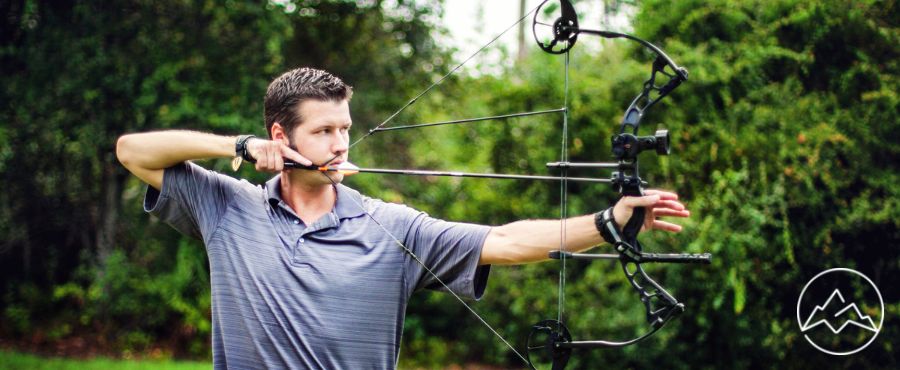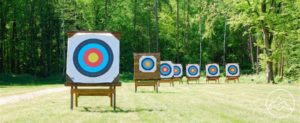In the world of archery, the bow is the ultimate tool of precision and skill. Like a symphony conductor wielding a baton, the archer wields the bow with grace and finesse, directing the arrow towards its target with unwavering accuracy. However, to achieve such mastery, one must first understand the intricacies of bow specifications. Enter ‘The Ultimate Guide to Bow Specifications’, a comprehensive compendium that unravels the enigma of arrow speed, mass weight, bow length, draw length, draw weight, let-off, and brace height. This guide delves into the technical aspects of each specification, revealing their profound impact on the bow’s performance, accuracy, and comfort. From the trajectory and kinetic energy of the arrow to the stability and recoil of the bow, every detail is meticulously explored. So, join us on this journey as we navigate the realm of bow specifications and equip ourselves with the knowledge needed to choose the perfect bow for optimal shooting form and unrivaled precision.
Key Takeaways
- Understanding bow specifications is crucial for selecting a bow that fits properly and enhances shooting form and accuracy.
- Arrow speed greatly impacts trajectory and kinetic energy.
- Draw length directly affects accuracy and shooting form.
- Mass weight plays a role in stability and recoil.
Bow Specs Explained
The understanding of bow specs, including arrow speed, mass weight, bow length, draw length, draw weight, let-off, and brace height, is crucial for selecting a bow that fits properly and enhances shooting form and accuracy. Arrow speed, measured in FPS, greatly impacts the trajectory of the arrow and its kinetic energy upon impact. Draw length, the distance a bow is pulled back, directly affects accuracy and shooting form. The longer the draw length, the more potential for accuracy. Mass weight, the weight of the bow without accessories, plays a role in stability and recoil. Bow length, measured from axle to axle, determines maneuverability and stability. By understanding these specifications, archers can make informed decisions when choosing a bow that aligns with their shooting goals and preferences.
Choosing the Right Bow
When selecting a bow, it is essential to consider various factors such as arrow speed, mass weight, bow length, draw length, draw weight, let-off, and brace height, as these specifications play a crucial role in determining the bow’s suitability for the shooter’s needs, much like the way a well-fitted glove enhances hand dexterity. Bow sizing is an important aspect to consider. It involves choosing the right bow length and draw length based on the shooter’s body measurements. The bow length determines maneuverability and stability, while the draw length affects accuracy and form. Additionally, selecting the appropriate draw weight is crucial. Draw weight refers to the force needed to pull the bow and is measured in pounds. It is important to choose a draw weight that the shooter can comfortably handle to ensure proper shooting form and accuracy.
Setting a Budget
Setting a budget is an important consideration when purchasing a bow, as it can help determine whether to invest in a new or used bow based on price ranges for starter, intermediate, and professional bows. When buying used bows, there are both pros and cons to consider. On the positive side, used bows can often be found at a lower price point, making them more affordable for those on a tight budget. Additionally, buying used allows for the opportunity to find a higher quality bow within a lower price range. However, it is important to carefully inspect the condition of the used bow, as there may be wear and tear or potential issues that could affect its performance. It is also important to ensure that the used bow is the correct fit for the shooter, as individual preferences and shooting styles can vary. Ultimately, deciding whether to buy new or used depends on the individual’s budget and preferences.
Frequently Asked Questions
What are the different types of bow accessories available and how do they affect bow performance?
Bow accessories act as the tools that enhance the performance of a bow, much like paintbrushes to an artist. Different types of bow sights, including fixed pin, adjustable pin, and single pin sights, aid in aiming and target acquisition. Stabilizers, on the other hand, improve accuracy by reducing bow torque and minimizing vibrations. By adding weight to the bow, stabilizers enhance stability and balance, resulting in more controlled and precise shots. These accessories play a crucial role in maximizing the potential of a bow for optimal performance.
How do I determine the appropriate draw length for my bow?
Understanding the importance of draw length in archery is crucial for achieving proper shooting form and accuracy. Determining the appropriate draw length for a bow involves measuring the length of the shooter’s arm span and dividing it by 2.5. This measurement is then adjusted based on factors such as the shooter’s shooting style and physical characteristics. Having the correct draw length ensures that the bow is properly aligned with the shooter’s body, allowing for consistent and accurate shots.
What are the advantages and disadvantages of a longer vs. shorter bow length?
In the realm of archery, the choice between a longer or shorter bow length presents a trade-off between stability and maneuverability. A longer bow offers increased stability, providing a solid foundation for accurate shots. On the other hand, a shorter bow length offers enhanced maneuverability, allowing for ease of movement in various shooting positions. Thus, the decision hinges upon the balance between stability for precise aiming and maneuverability for portability and flexibility in shooting scenarios.
Are there any specific maintenance requirements for bows?
Maintenance requirements for bows include regular cleaning and lubrication of the bowstring and cables to prevent wear and ensure smooth operation. It is also important to inspect the limbs for any cracks or damage, as well as checking the bow’s alignment and adjusting if necessary. Common bow problems such as limb twist or string serving separation can be fixed by a professional bow technician. Regular maintenance and addressing any issues promptly will help to prolong the lifespan and performance of the bow.
Can I use the same arrows for different types of bows, or do I need to purchase specific arrows for each bow?
Are the same arrows compatible with different types of bows, or is it necessary to purchase specific arrows for each bow? Arrow compatibility with different bow types is crucial for optimal performance and safety. Different bows have varying specifications, such as draw weight, draw length, and arrow speed, which all impact arrow selection. Choosing arrows that match the specific requirements of each bow type ensures proper arrow flight, accuracy, and overall shooting performance. It is recommended to consult with a professional or refer to the manufacturer’s guidelines when selecting arrows for different bow types.
Conclusion
In conclusion, understanding the various specifications of a bow is crucial for selecting the right one for archery. From arrow speed to brace height, each specification plays a significant role in the performance and comfort of the bow. By considering factors like arrow trajectory, stability, and draw weight, archers can ensure optimal shooting form and accuracy. Additionally, setting a budget and exploring different price ranges can help individuals find a bow that meets their needs without breaking the bank. So, whether you’re a beginner or a professional, use this guide to navigate the world of bow specifications and find the perfect fit for your archery journey.












